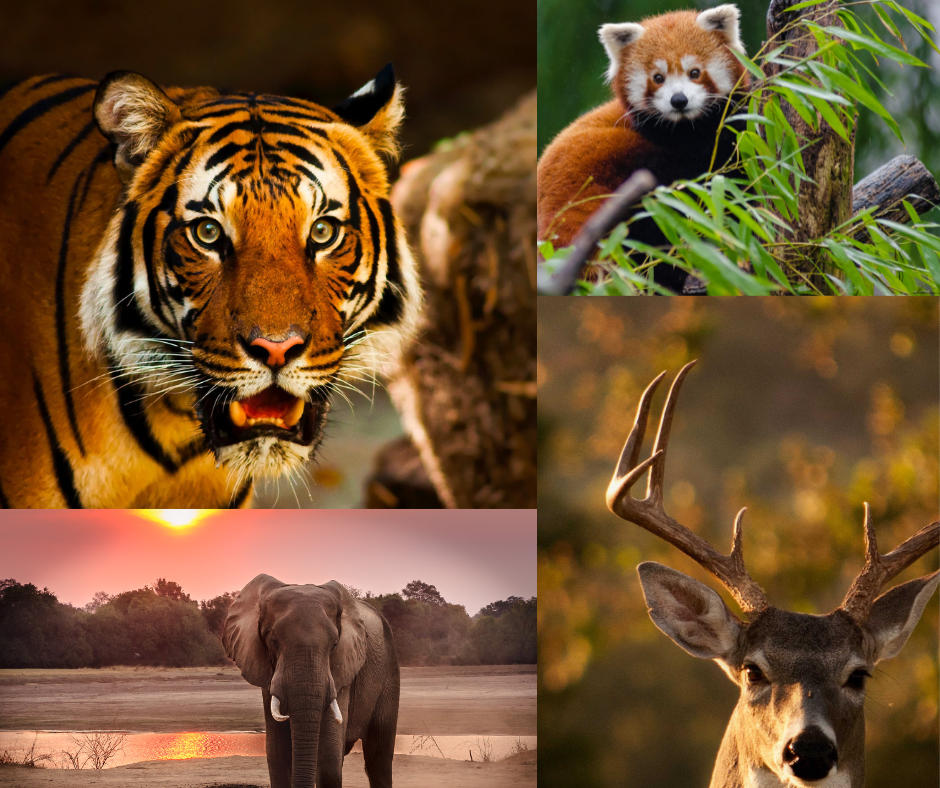Introduction to Solo Wildlife Photography
Solo wildlife photography is an immersive journey of patience and creativity. I often trek alone, camera in hand, surrounded by natural beauty. Solo wildlife photography helps me connect deeply with animals. In this article, you will explore best destinations for solo wildlife photographers, essential tips for nature photography and animal observation, guidance on wildlife documentation, and insights into purchasing photography tours.
Why Choose Solo Wildlife Photography?
Choosing solo wildlife photography allows you to work at your own pace. You can focus entirely on your subject without distractions. That freedom boosts creativity and fosters a stronger connection with wildlife. Capturing rare animal behavior becomes possible when there are no compromises between companions.

Best Destinations for Solo Wildlife Photographers
When exploring top locations, your wildlife photography experience becomes richer. The Galápagos Islands provide a unique mix of tame wildlife. There, you can photograph giant tortoises, marine iguanas, and finches up close. It’s a hotspot for wildlife documentation.
With National Geographic Expeditions, you can travel to Africa or the Arctic in small groups. Solo travelers still gain an independent experience while benefiting from expert guidance. Wildlife sanctuaries in India, such as Ranthambore and Kaziranga, present chances to photograph tigers, elephants, and rhinos in their natural habitat. If you travel solo, you can choose your timing and environment to capture these majestic creatures best. Spring wildlife tours across Europe reveal birds, deer, and foxes during awakening nature. Traveling solo during spring allows you to capture soft golden lights at dawn and dusk.
Nature Photography and Animal Observation
Nature photography demands careful animal observation alongside technical skill. Learning behavior patterns helps anticipate moments when animals feed, play, or interact. Observing wind direction prevents you from startling your subject. Combining nature photography with animal observation improves your results and helps you tell a deeper story.
Solo Wildlife Photography Tips
Planning routes ahead gives you knowledge of likely wildlife locations. Choosing quiet gear prevents startling animals. Camouflage or neutral clothing helps you blend into the environment. Staying at a safe distance lets you capture genuine natural behavior. Using long lenses results in sharp wildlife portraits. Carrying extra batteries and memory cards avoids missing key moments. Studying animal tracks helps you track subjects effectively. Respecting rules in wildlife sanctuaries ensures both your safety and that of the wildlife. Waiting patiently often leads to the most dramatic shots. Using natural light during golden hours provides elegant tones to your photos.
Wildlife Documentation: Why It Matters
Wildlife documentation goes beyond artistry; it builds records of animal behavior and habitat conditions. Researchers benefit from visual records created by solo wildlife photographers. Carrying field notes to log date, time, location, weather, and behavior adds scientific value to your work.
\
Purchase Photography Tours
If traveling solo feels intimidating initially, you can purchase photography tours. Tours like National Geographic Expeditions give you guides, support, and logistical help. Despite being in a group, you still enjoy solo time during shoots and can return to camaraderie later. These tours balance freedom and structure perfectly.
National Geographic Expeditions
National Geographic Expeditions offer expert-led journeys to remote locations such as Antarctica or the Galápagos Islands. They include photo workshops, talks, and editing sessions. Booking such trips helps you refine your skills, build your portfolio, and connect with seasoned photographers.
Galápagos Islands: A Deep Dive
The Galápagos Islands offer rare wildlife encounters where animals are accustomed to human presence. You might capture a marine iguana basking on black lava rock or a blue‑footed booby dance. Each island features unique species and geological beauty. A solo trip here is both humbling and inspiring.
Spring Wildlife Tours: Seasonal Magic
Spring wildlife tours reveal the renewal of nature. Standing in morning mist as fawns learn to walk or watching migratory birds return excites every nature photographer. The combination of fresh greenery and soft light during spring presents ideal photography conditions.
Wildlife Sanctuaries: Capturing Rare Species
Wildlife sanctuaries help preserve endangered species and support conservation efforts. In India, safari visits to tiger reserves during monsoon offer dramatic rain-soaked backdrops. Observing a tiger at a watering hole provides a powerful image. Visiting solo allows you to linger without rushing.
How to Prepare for Solo Wildlife Photography
Packing the right gear greatly enhances your experience. Take weather‑sealed camera bodies, fast telephoto lenses, a lightweight tripod or monopod, and filters such as polarizers. Bring rain protection for both you and your gear, plus waterproof bags, sturdy footwear, insect repellent, a first aid kit, GPS or compass, field guidebooks, and enough water and snacks to keep you energized.
You should prepare physically through consistent hiking to build stamina. Practice setting up your gear quickly to capture fleeting opportunities. Learning basic wilderness survival—like navigation and shelter—boosts confidence when venturing alone.
Safety While Photographing Alone
Solo wildlife photography requires strong safety awareness. Always share your itinerary with someone you trust. Use GPS or offline maps for navigation. Carry a whistle or signalling device for emergencies. Respect wildlife distances to avoid provoking animals and minimize risks.
Wildlife Photography Gear Recommendations
High-quality gear makes a difference. Fast telephoto lenses such as 100‑400 mm help you shoot from a distance. Lightweight tripods and monopods provide stability without slowing you down. Polarizing filters reduce discharge and enhance colors. Gear protection including rain covers prevents water damage. Spare batteries, memory cards, and a silent shutter mode will ensure you don’t miss a moment.
Using Camouflage and Blinds
Portable blinds or natural camouflage enable you to approach shy animals. Clothing and gear matching the environment allows you to stay concealed. Blinds offer a dedicated hide that supports longer shoots without disturbing wildlife.
Wildlife Photography in Extreme Environments
In cold regions, use insulated gloves and lithium batteries to mitigate quick drainage. Dress in moisture‑wicking layers. Protect your camera from moisture buildup by keeping it close to your body. In hot, dry areas, bring sunscreen, water, and use dust‑protection for your gear. Avoid midday heat to prevent overheated subjects. By early morning during spring wildlife tours near lakes or rivers, use waterproof boots. Wipe lenses often and use hoods to keep water drops off sensitive glass.
Photographing Behavior and Interaction
This is where emotion in wildlife photography shines. While observing a mother bear playing with her cubs, I waited nearly three hours before the cubs tumbled playfully. That patience paid off. Learning animal behavior helps you anticipate such moments. Nature documentaries and field guides enhance your understanding.
Editing Wildlife Photos
Post-processing should enhance, not change, your images. I use Lightroom and Capture One to adjust contrast, sharpness, and white balance. Cropping carefully refines composition. Removing small distractions enhances focus without sacrificing authenticity.
Wildlife Photography Ethics
Ethical practice underpins meaningful wildlife photography. Never bait animals or interfere with their behavior. Stay on trails and respect sanctuary rules. When sharing your images, promote conservation and understanding. Doing so helps protect animals and their habitats.
Building a Wildlife Portfolio
An effective wildlife portfolio includes animal portraits, behavioral sequences, close-up detail shots, and habitat context. Grouping images thematically creates visual narratives. I always add captions with date, location, and subject information to give context.
Storytelling with Solo Wildlife Photography
Every photo has a story. I describe my experience—arriving before dawn, waiting through mist, the subject’s movement, and what I learned. These narratives connect audiences emotionally to the image and the environment, illustrating the essence of my solo wildlife photography.
Wildlife Photography Community and Learning
Joining the wildlife photography community expands perspectives. I attend National Geographic Expeditions and independent workshops to learn from experts. Sharing work at forums or exhibitions invites feedback and new ideas, boosting my skills.
Solo Wildlife Photography Tips for Beginners
Begin your journey with local projects. Photograph backyard birds. Use a zoom lens and your own fieldwork to learn behavior. Focus on one species at a time, gaining confidence by photographing its habits. Post images online for feedback, then build skills. As you grow, you might purchase photography tours to support your solo adventures.
Wildlife Sanctuaries: Supporting Conservation
Visiting wildlife sanctuaries isn’t just about photos. Your images can raise awareness and funds to support conservation. Strategy behind your creative solo wildlife photography contributes to wider protection efforts, ensuring the species and landscapes continue to thrive.
Conclusion
Solo wildlife photography allows you to explore, create, and connect deeply with the natural world. From Galápagos Islands to Indian wildlife sanctuaries, spring wildlife tours, and National Geographic Expeditions, there are endless opportunities. Use nature photography and animal observation to document wildlife thoughtfully. Purchase photography tours if you seek guidance while maintaining independence. My journey has taught me patience, respect, and storytelling through images. I encourage you to pick up your camera, venture into the wild, and begin your own solo wildlife photography adventure.







